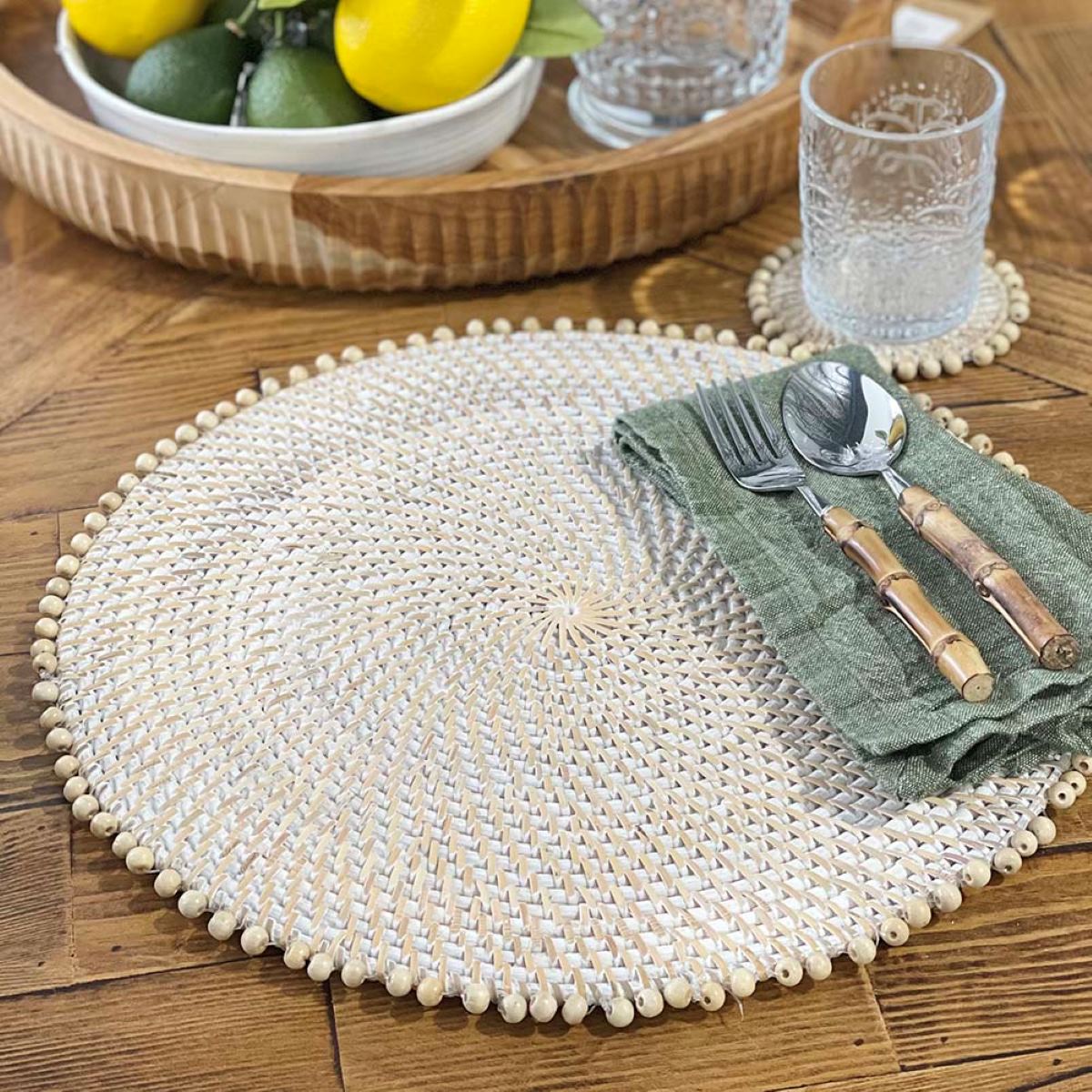

Tableware
What Material Is Best For Placemats
Modified: January 4, 2024
Discover the best material for placemats and elevate your tableware game. Choose from a variety of options perfect for any occasion.
(Many of the links in this article redirect to a specific reviewed product. Your purchase of these products through affiliate links helps to generate commission for Storables.com, at no extra cost. Learn more)
Introduction
Placemats are more than just decorative table accessories; they serve an important purpose in enhancing your dining experience. Whether you”re hosting a formal dinner party or enjoying a casual family meal, placemats provide a layer of protection for your table while adding style and personality to your dining space.
When it comes to choosing the best material for your placemats, there are several factors to consider. The material not only affects the visual appeal but also determines the durability, ease of maintenance, and functionality of the placemats. In this article, we will explore the different types of placemat materials and help you make an informed decision.
Read more: What Is A Placemat?
The Importance of Placemats
Placemats serve as a barrier between hot plates, messy spills, and utensil scratches, protecting your table surface from damage. They provide a clean and designated space for each individual, ensuring a well-organized dining area. Placemats also act as decorative elements, allowing you to showcase your personal style and enhance the overall aesthetic of your table setting.
Factors to Consider when Choosing Placemat Materials
Before delving into the specific materials, let’s discuss the key factors to consider when selecting placemat materials:
- Durability: Choose materials that are sturdy and can withstand frequent use and cleaning without losing their shape or color.
- Easy Maintenance: Opt for materials that are easy to clean and maintain, as placemats are prone to spills and stains.
- Heat Resistance: Consider materials that can withstand hot dishes and protect your table from potential heat damage.
- Style: Look for materials that complement your table setting and reflect your personal style.
- Functionality: Determine how you plan to use the placemats and choose materials that align with your specific needs, such as waterproof or non-slip options.
Key Takeaways:
- Elevate your dining experience with the right placemat material. Consider factors like durability, heat resistance, and style to protect your table and showcase your personal flair.
- From eco-friendly bamboo to versatile silicone, choose placemat materials that suit your needs. Enhance your table setting with durability, easy maintenance, and visual appeal.
The Importance of Placemats
Placemats are more than just decorative table accessories; they serve an important purpose in enhancing your dining experience. Whether you’re hosting a formal dinner party or enjoying a casual family meal, placemats provide a layer of protection for your table while adding style and personality to your dining space.
One of the key benefits of using placemats is that they act as a barrier between hot plates, messy spills, and utensil scratches, protecting your table surface from damage. Placemats provide a clean and designated space for each individual at the table, ensuring a well-organized dining area.
Furthermore, placemats can significantly contribute to the overall aesthetic appeal of your dining table. They allow you to showcase your personal style and enhance the visual presentation of your meals. With a wide variety of designs, patterns, and colors available in placemats, you can easily customize your table setting to match different occasions or themes.
In addition to their protective and decorative functions, placemats offer practical benefits. They make clean-up after meals much easier, as you can simply remove and clean the placemats separately instead of having to clean the entire table surface. This not only saves you time and effort but also helps prolong the lifespan of your table.
Placemats also provide an opportunity to incorporate educational elements into your mealtime. For example, you can choose placemats with maps, alphabets, or educational facts that can engage and entertain children while they eat. This can encourage curiosity and stimulate learning in a fun and interactive way.
Moreover, placemats can be particularly useful for those with elderly or disabled family members. The non-slip and heat-resistant properties of certain placemats offer added safety and support during meals, reducing the risk of accidents or injuries.
Whether you’re using placemats for everyday meals or special occasions, their presence can elevate the overall dining experience. Placemats create a sense of structure and elegance, making your table look more inviting and put-together. They also provide a focal point for your guests’ attention, drawing their eyes to the beautifully set table.
Ultimately, placemats are versatile table accessories that offer both functionality and style. Investing in high-quality placemats made from durable materials not only protects your table but also enhances the ambiance of your dining area. So, next time you gather around the table, consider adding placemats to elevate the dining experience for yourself and your loved ones.
Factors to Consider when Choosing Placemat Materials
Before delving into the specific materials, let’s discuss the key factors to consider when selecting placemat materials:
- Durability: Choose materials that are sturdy and can withstand frequent use and cleaning without losing their shape or color. Look for placemats made from high-quality materials such as bamboo, vinyl, or fabric that are known for their durability.
- Easy Maintenance: Opt for materials that are easy to clean and maintain, as placemats are prone to spills and stains. Materials like vinyl and silicone are water-resistant and can be easily wiped clean with a damp cloth, while fabric placemats may require machine or hand washing.
- Heat Resistance: Consider materials that can withstand hot dishes and protect your table from potential heat damage. Look for placemats made from heat-resistant materials such as silicone or bamboo, which can handle high temperatures without warping or melting.
- Style: Placemats offer an opportunity to add flair and style to your table setting. Consider the overall aesthetic of your dining area and choose materials that complement your decor. Whether you prefer a modern, minimalist look or a traditional, vintage vibe, there are materials that can suit your style.
- Functionality: Determine how you plan to use the placemats and choose materials that align with your specific needs. If you have young children, you may want to opt for placemats that are waterproof and stain-resistant. Non-slip placemats are also a great choice to ensure stability during mealtime.
- Environmental Impact: For eco-conscious individuals, consider materials that are environmentally friendly and sustainable. Bamboo placemats, for example, are made from a renewable resource and are biodegradable.
By considering these factors, you can choose the most suitable placemat material that meets your practical and aesthetic requirements. Now, let’s explore some common placemat materials and their characteristics.
Read more: What Is A Placemat Used For?
Bamboo Placemats
Bamboo placemats are an eco-friendly and stylish option for your table setting. Made from natural bamboo fibers, these placemats offer a range of benefits that make them a popular choice among tableware enthusiasts.
One of the key advantages of bamboo placemats is their durability. Bamboo is known for its strength and resilience, making it a long-lasting material for placemats. They can withstand wear and tear from daily use and maintain their shape and color for an extended period.
In addition to durability, bamboo placemats are also heat-resistant. This means you can confidently place hot plates or dishes directly onto the mats without worrying about any damage to your table surface. The heat resistance property makes bamboo placemats ideal for serving warm meals and prevents any potential burns or marks on your table.
Bamboo placemats are not only functional but also visually appealing. They add a touch of natural elegance to your dining table with their distinctive texture and earthy tones. Whether you prefer a rustic, farmhouse style or a modern, minimalist look, bamboo placemats can effortlessly blend into various decor themes. Additionally, bamboo placemats are available in different shapes and sizes, allowing you to choose the perfect fit for your table.
Maintenance is another aspect where bamboo placemats shine. They are relatively easy to clean, requiring only a gentle wipe with a damp cloth. The smooth surface of the mats prevents food particles from sticking, making it hassle-free to remove spills and stains.
Furthermore, bamboo is a sustainable and renewable resource, making bamboo placemats an environmentally friendly choice. Bamboo is fast-growing and does not require chemical pesticides or fertilizers to thrive, making it a more sustainable alternative to other materials.
Overall, bamboo placemats offer a combination of durability, heat resistance, style, and environmental consciousness. Whether you’re hosting a formal dinner or enjoying a casual meal with family and friends, bamboo placemats are a versatile and attractive option to protect your table while adding a touch of nature to your dining space.
Vinyl Placemats
Vinyl placemats are a popular choice for those seeking a practical and versatile option for their table setting. Made from PVC (polyvinyl chloride) material, vinyl placemats offer a range of benefits that make them suitable for everyday use.
One of the key advantages of vinyl placemats is their durability. The PVC material is known for its strength and resilience, allowing the placemats to withstand regular use and maintain their shape and color over time. Vinyl placemats are resistant to tearing, making them a long-lasting option for busy households and dining establishments.
In addition to durability, vinyl placemats are highly water-resistant and easy to clean. They offer a protective barrier against spills and stains, preventing any liquid from seeping through and damaging your table surface. To clean vinyl placemats, simply wipe them with a damp cloth or sponge. Their smooth surface prevents food particles from adhering, making it easier to remove any residue or stains.
Another notable feature of vinyl placemats is their heat resistance. They can withstand moderate heat levels, allowing you to place hot plates or dishes directly on the mats without worrying about damage. However, it is recommended to use trivets or hot pads for extremely hot items to ensure maximum protection.
Vinyl placemats come in a wide variety of designs, colors, and patterns, allowing you to personalize your table setting to match your style and taste. Whether you prefer a bold and vibrant look or a subtle and minimalist aesthetic, there is a vinyl placemat design to suit your preference. This versatility makes vinyl placemats a great option for both casual and formal dining occasions.
Moreover, vinyl placemats are lightweight and easily portable, making them convenient for outdoor dining or picnics. They can be effortlessly rolled or folded for storage, taking up minimal space in your kitchen or dining area. This feature also makes vinyl placemats a practical choice for those who frequently entertain or host gatherings.
It is worth noting that while vinyl placemats are generally easy to clean, they may not be suitable for use in the dishwasher or the dryer. High heat or prolonged exposure to intense sunlight may cause the PVC material to warp or deteriorate over time. Therefore, it is recommended to hand wash and air dry vinyl placemats to maintain their quality.
Overall, vinyl placemats offer a combination of durability, water resistance, ease of cleaning, and design versatility. Whether you use them for everyday meals or special occasions, vinyl placemats are a practical and stylish choice for protecting your table and enhancing your dining experience.
Fabric Placemats
Fabric placemats are a classic and elegant choice for adding a touch of softness and sophistication to your dining table. Made from various types of fabrics, such as cotton, linen, or polyester blends, fabric placemats offer a range of benefits that make them a popular option for both casual and formal occasions.
One of the key advantages of fabric placemats is their versatility in terms of design and style. Fabric placemats come in a wide array of colors, patterns, and textures, allowing you to easily customize your table setting to match your personal aesthetic. Whether you prefer a traditional, floral design for a formal dinner or a modern, geometric pattern for a casual brunch, there is a fabric placemat to suit your taste.
Another notable feature of fabric placemats is their softness and comfort. Unlike other materials, fabric placemats provide a gentle and cushioned surface for your plates and utensils. This can create a more pleasant dining experience, especially for those who prefer a softer texture against their tableware.
Fabric placemats are also lauded for their absorbency. They can effectively absorb spills and prevent liquid from reaching your table surface. This makes fabric placemats a practical choice for messy eaters or households with young children. However, it is important to note that certain fabrics may stain more easily than others, so it is advisable to choose materials that are stain-resistant or opt for darker colors that can camouflage potential stains.
In terms of maintenance, fabric placemats may require a bit more care compared to other materials. Many fabric placemats are machine washable, allowing you to easily clean them whenever necessary. It is recommended to follow the care instructions on the placemats’ labels to ensure proper cleaning and maintenance. Some fabric placemats may also require ironing to maintain their crisp and polished look.
It is important to consider the specific fabric used for the placemats, as different fabrics have different characteristics. Cotton and linen placemats are natural and breathable options that offer a rustic and laid-back feel. Polyester blends, on the other hand, are more durable and wrinkle-resistant, making them a convenient choice for everyday use.
Overall, fabric placemats add a touch of elegance and sophistication to your dining table. Their versatility in design, softness, and absorbency make them suitable for various occasions. While they may require slightly more maintenance, fabric placemats are a timeless option that can elevate your table setting and enhance the overall dining experience.
When choosing material for placemats, consider easy-to-clean options like vinyl or plastic for everyday use, while fabric or bamboo can add a touch of elegance for special occasions.
Silicone Placemats
Silicone placemats are a modern and practical choice for those looking for a versatile and durable option for their table setting. Made from food-grade silicone, these placemats offer a range of benefits that make them highly desirable in today’s dining landscape.
One of the key advantages of silicone placemats is their exceptional durability. Silicone is a flexible and resilient material that can withstand everyday use without losing its shape or integrity. These placemats are resistant to tearing, cracking, and fading, ensuring long-lasting performance and value.
In addition to durability, silicone placemats are also heat resistant. They can handle high temperatures without melting or warping, making them suitable for serving hot dishes. You can confidently place hot plates or bowls directly on silicone placemats, knowing that they will protect your table surface from heat damage.
Another notable feature of silicone placemats is their non-slip properties. The silicone material has a naturally grippy texture that helps keep the placemats in place on your table. This prevents accidental slips or movements of the placemats while you’re eating or serving, providing stability and enhancing safety during mealtime.
When it comes to maintenance, silicone placemats are incredibly easy to clean. They are resistant to stains, odors, and bacteria, minimizing the risk of food contamination. Most silicone placemats can be wiped clean with a damp cloth or sponge, or even tossed in the dishwasher for a more thorough cleaning. The non-porous nature of silicone prevents food particles from seeping into the placemats, making them hygienic and low-maintenance.
Furthermore, silicone placemats are highly versatile in their functionality. They can be used not only as placemats but also as trivets, pot holders, or even as a surface for kneading dough or rolling out pastry. This multipurpose nature makes silicone placemats a valuable addition to any kitchen.
From a design standpoint, silicone placemats offer a sleek and modern look. They are available in a variety of vibrant colors and contemporary designs, allowing you to add a pop of color or a minimalist touch to your table setting. Additionally, the flexibility of silicone enables easy storage. The placemats can be rolled or folded, taking up minimal space in your kitchen drawers or cabinets.
Overall, silicone placemats combine durability, heat resistance, non-slip functionality, easy cleaning, and versatility. Whether you’re hosting a casual gathering or enjoying a family meal, silicone placemats offer a practical and stylish solution to protect your table and enhance your dining experience.
Read more: What Materials Are Best For Cat Placemats
Paper Placemats
Paper placemats are a convenient and disposable option for adding a touch of charm to your table setting. Made from sturdy paper materials, these placemats offer a range of benefits that make them suitable for various occasions.
One of the key advantages of paper placemats is their affordability and accessibility. They are often available in bulk packs, making them a cost-effective choice for large gatherings or events. Whether you’re hosting a casual backyard BBQ or a festive holiday dinner, paper placemats offer an easy and budget-friendly way to dress up your table.
Another notable feature of paper placemats is their versatility in terms of design and patterns. From floral prints to holiday-themed motifs, paper placemats come in a wide range of options to suit different occasions and personal preferences. You can easily find paper placemats that align with your desired theme or color scheme, adding a festive or playful touch to your dining area.
One of the main advantages of paper placemats is their disposability. After the meal, you can simply gather the used placemats and discard them, eliminating the need for extra cleaning or laundry. This makes paper placemats a convenient choice for busy households or events where quick cleanup is desired.
In terms of functionality, paper placemats offer a layer of protection for your table surface. They act as a barrier between hot plates, spills, and scratches, helping to keep your table clean and unharmed.
It is important to note that while paper placemats are disposable, some of them may be made from recycled or sustainable materials, making them a more eco-friendly choice compared to other disposable options.
However, it is worth mentioning that paper placemats may not be as durable or heat resistant as other material options. They are more susceptible to tearing or damage from moisture, and hot dishes should not be placed directly on them to prevent potential burns or transfer of colors.
Overall, paper placemats offer a convenient and affordable option for dressing up your table and protecting your table surface. Whether you’re organizing a casual gathering, a children’s party, or a picnic, paper placemats provide a hassle-free and decorative solution for enhancing your dining experience.
Conclusion
Choosing the best material for your placemats is an important decision that can greatly enhance your dining experience. In this article, we explored various placemat materials, each with its own unique advantages and characteristics.
Bamboo placemats offer durability, heat resistance, and an eco-friendly appeal. They bring a natural and elegant touch to your table, making them a popular choice for those who appreciate sustainability and a rustic aesthetic.
Vinyl placemats provide durability, water resistance, and easy maintenance. With their wide range of designs and colors, vinyl placemats offer versatility and convenience, making them suitable for everyday use and special occasions.
Fabric placemats add a touch of elegance and softness to your table setting. With their vast design options and absorbency, fabric placemats offer visual appeal while providing a comfortable dining experience. However, they may require a bit more care and maintenance compared to other materials.
Silicone placemats offer exceptional durability, heat resistance, and non-slip properties. Their easy cleaning and versatility make them a practical choice for both indoor and outdoor use. The sleek and modern design of silicone placemats adds a contemporary touch to your table setting.
Lastly, paper placemats offer convenience, affordability, and a disposable option. They are ideal for casual gatherings or events where quick cleanup is desired. Although they may not be as durable as other materials, paper placemats provide a range of design choices to suit various themes and occasions.
Ultimately, the best placemat material for you will depend on your specific needs and preferences. Consider factors such as durability, ease of maintenance, heat resistance, style, and functionality when making your decision.
Whether you choose bamboo, vinyl, fabric, silicone, or paper placemats, incorporating these table accessories will not only provide protection for your table but also elevate the visual appeal of your dining space. Placemats offer an opportunity to showcase your personal style, enhance the ambiance of your table, and create a welcoming environment for your guests.
So, the next time you gather around the table, take a moment to carefully select the perfect placemats that align with your style and practical needs. Enjoy the benefits that these versatile table accessories bring to your dining experience, and create unforgettable moments with your loved ones.
Frequently Asked Questions about What Material Is Best For Placemats
Was this page helpful?
At Storables.com, we guarantee accurate and reliable information. Our content, validated by Expert Board Contributors, is crafted following stringent Editorial Policies. We're committed to providing you with well-researched, expert-backed insights for all your informational needs.
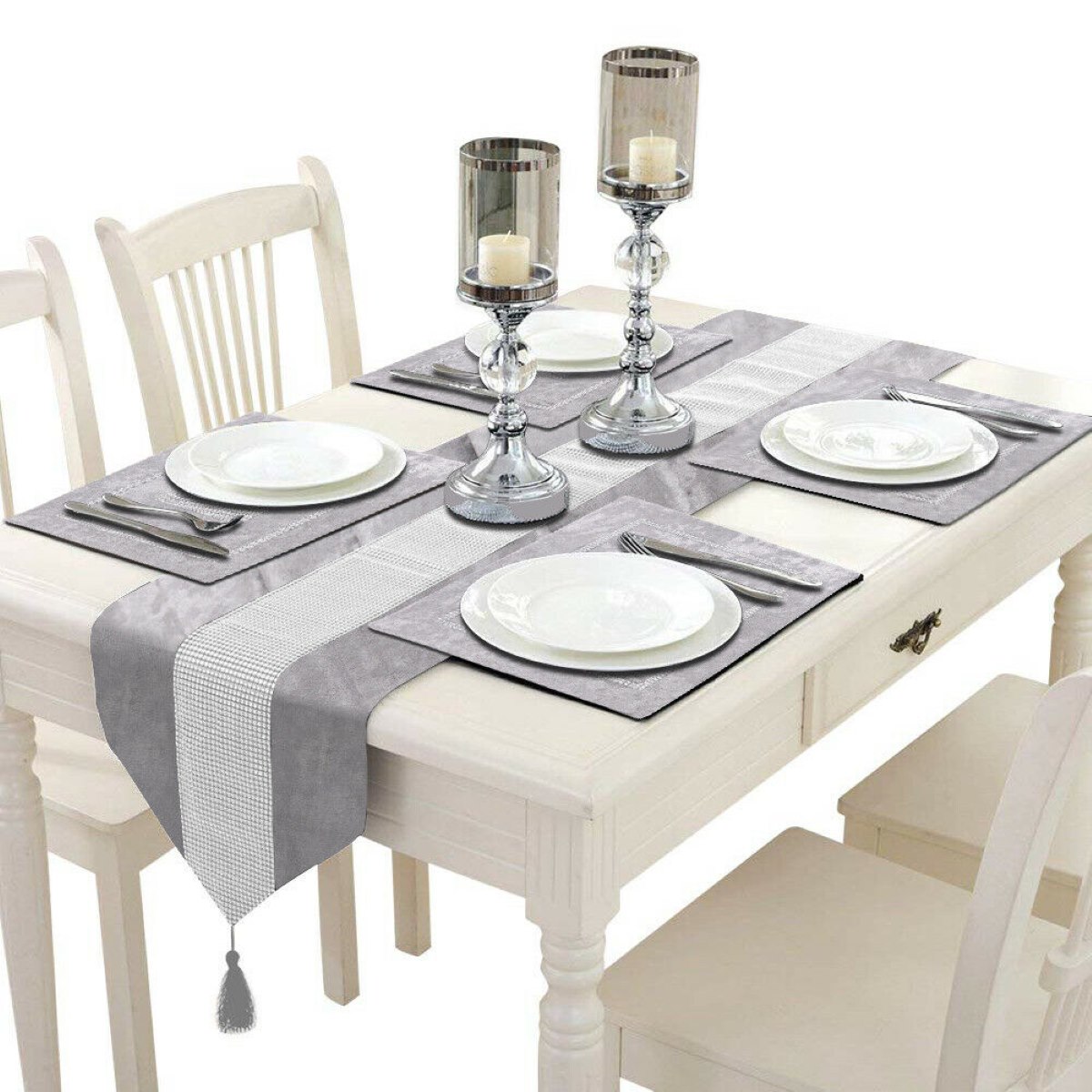
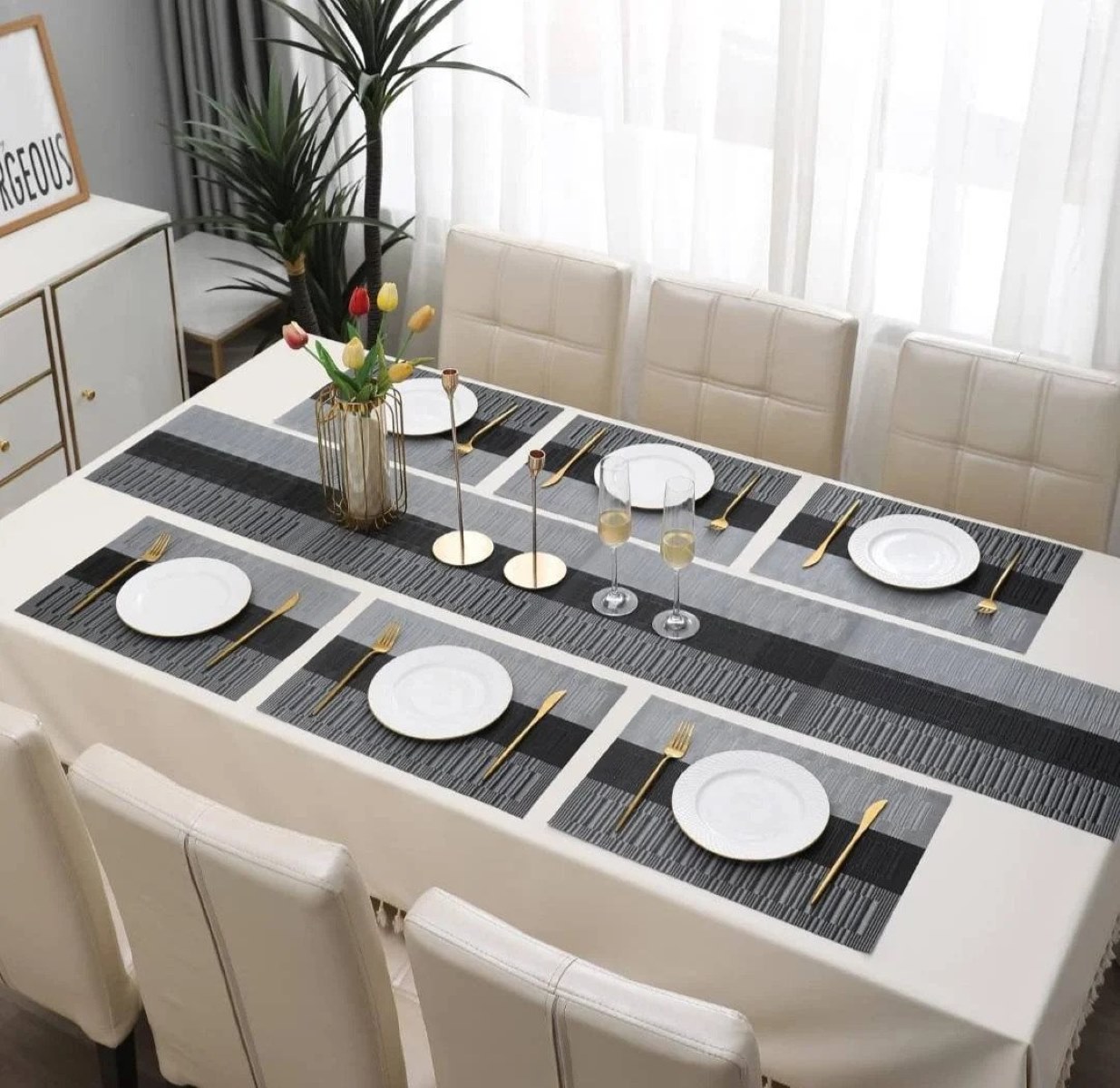
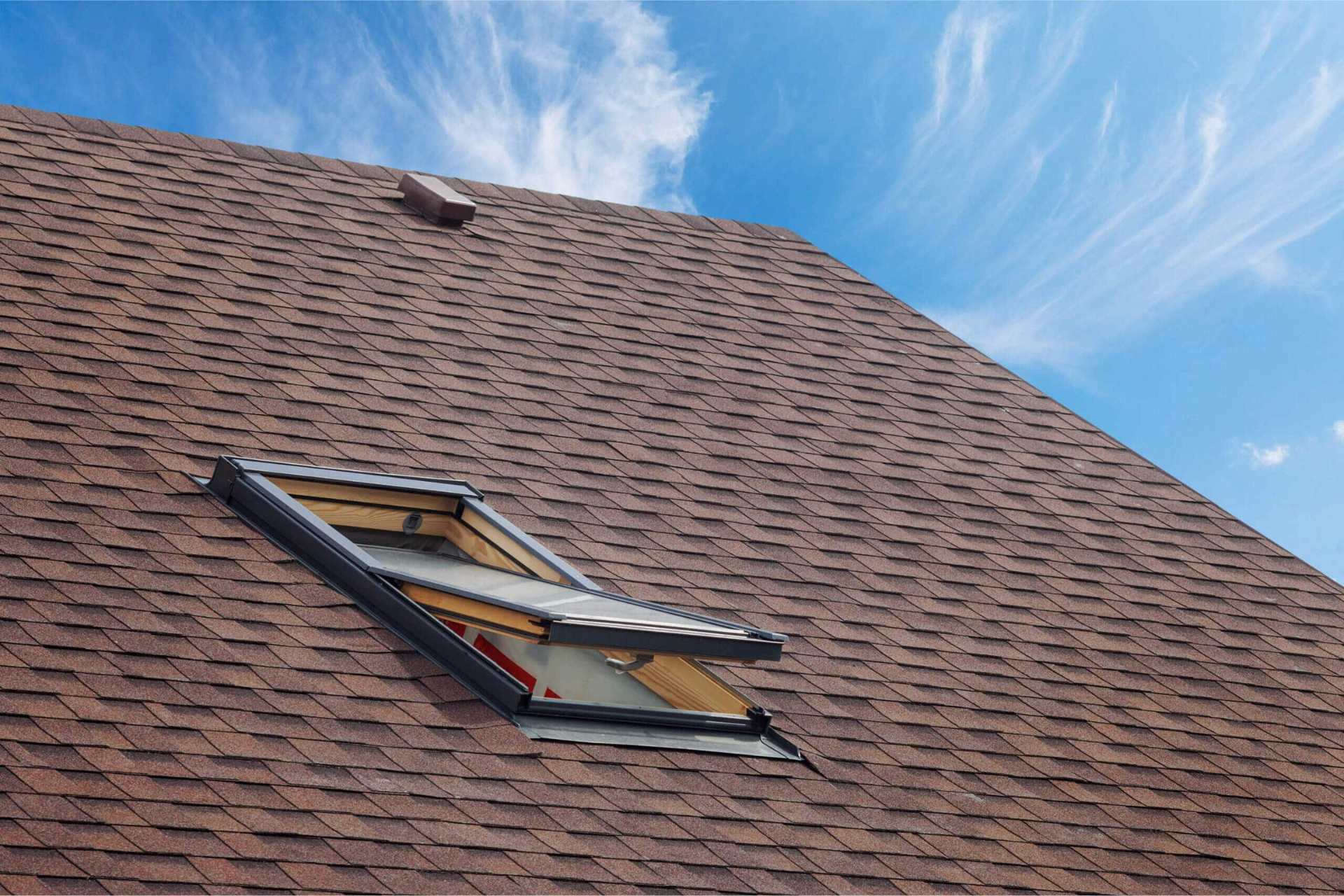
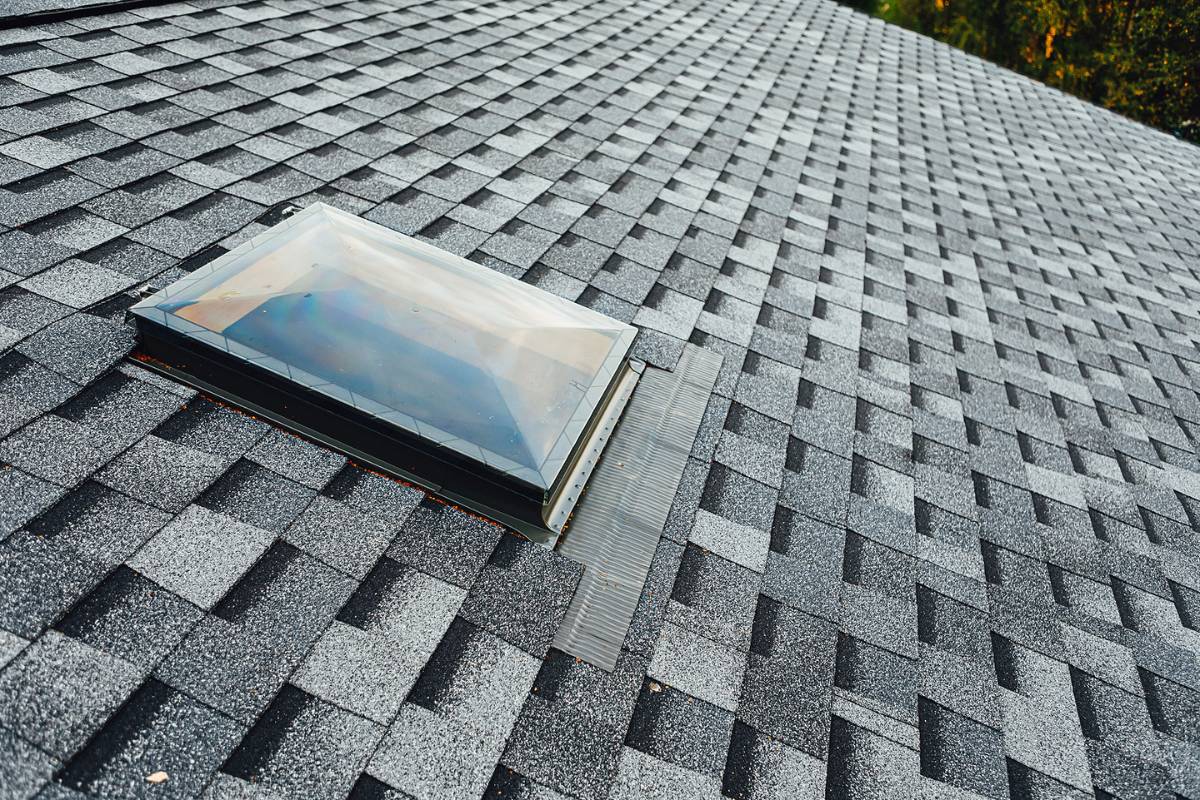
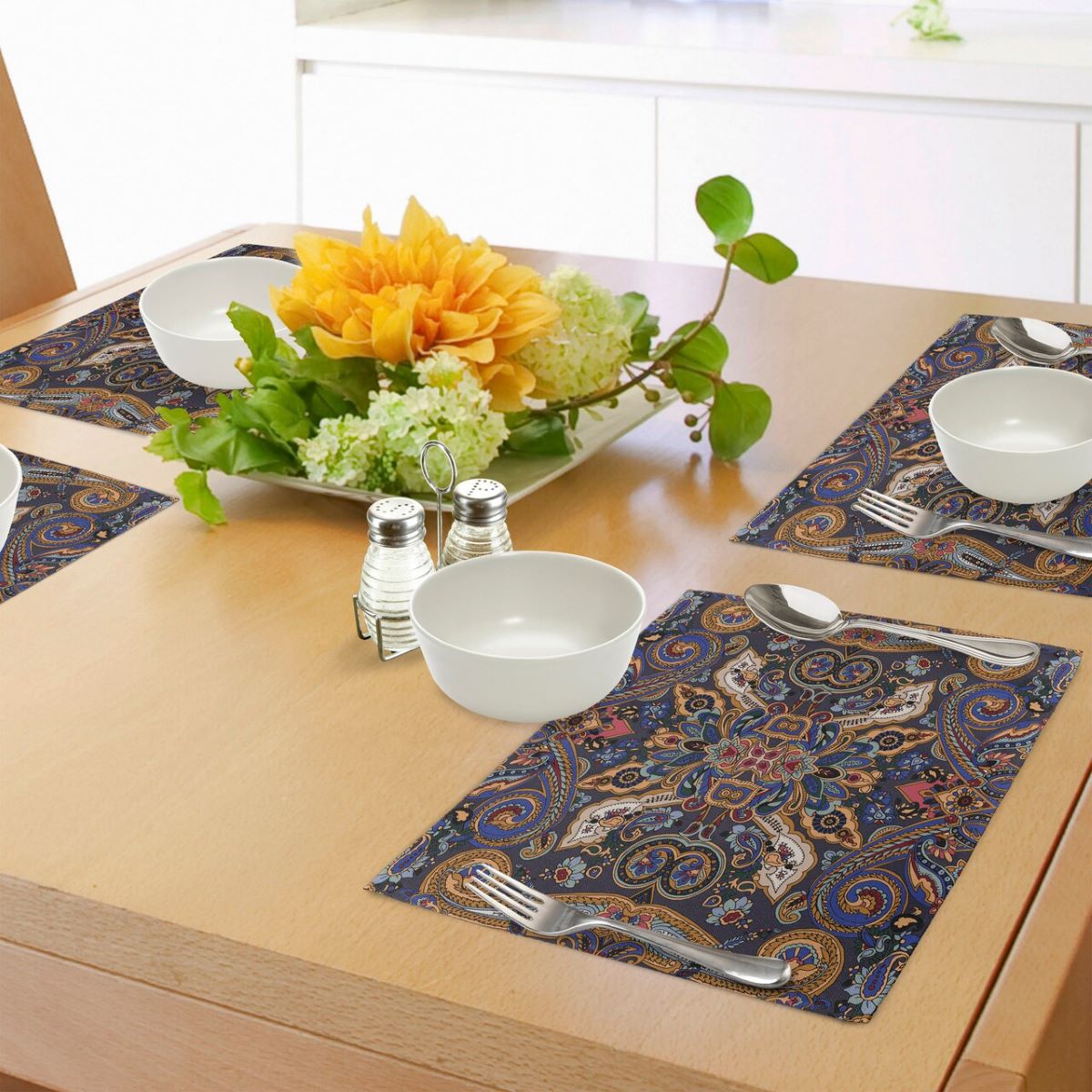
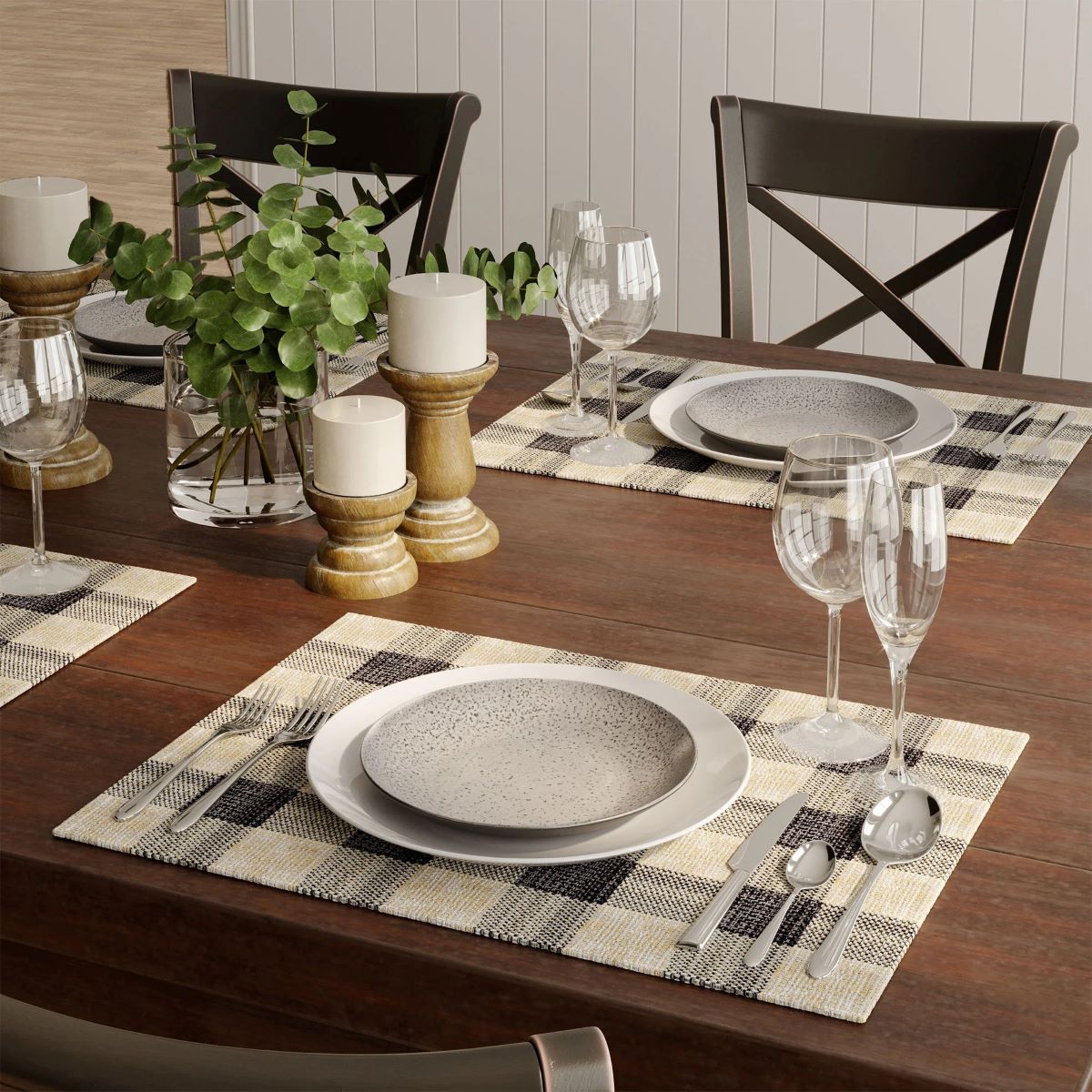
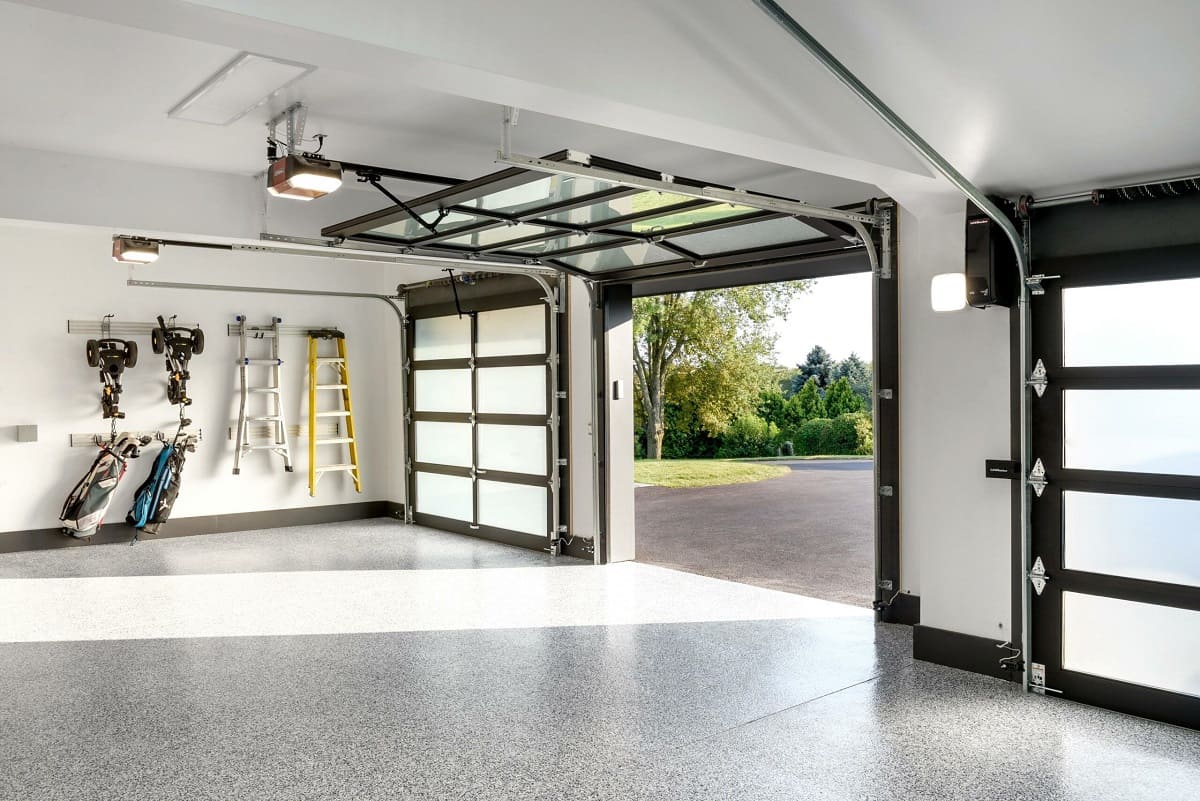
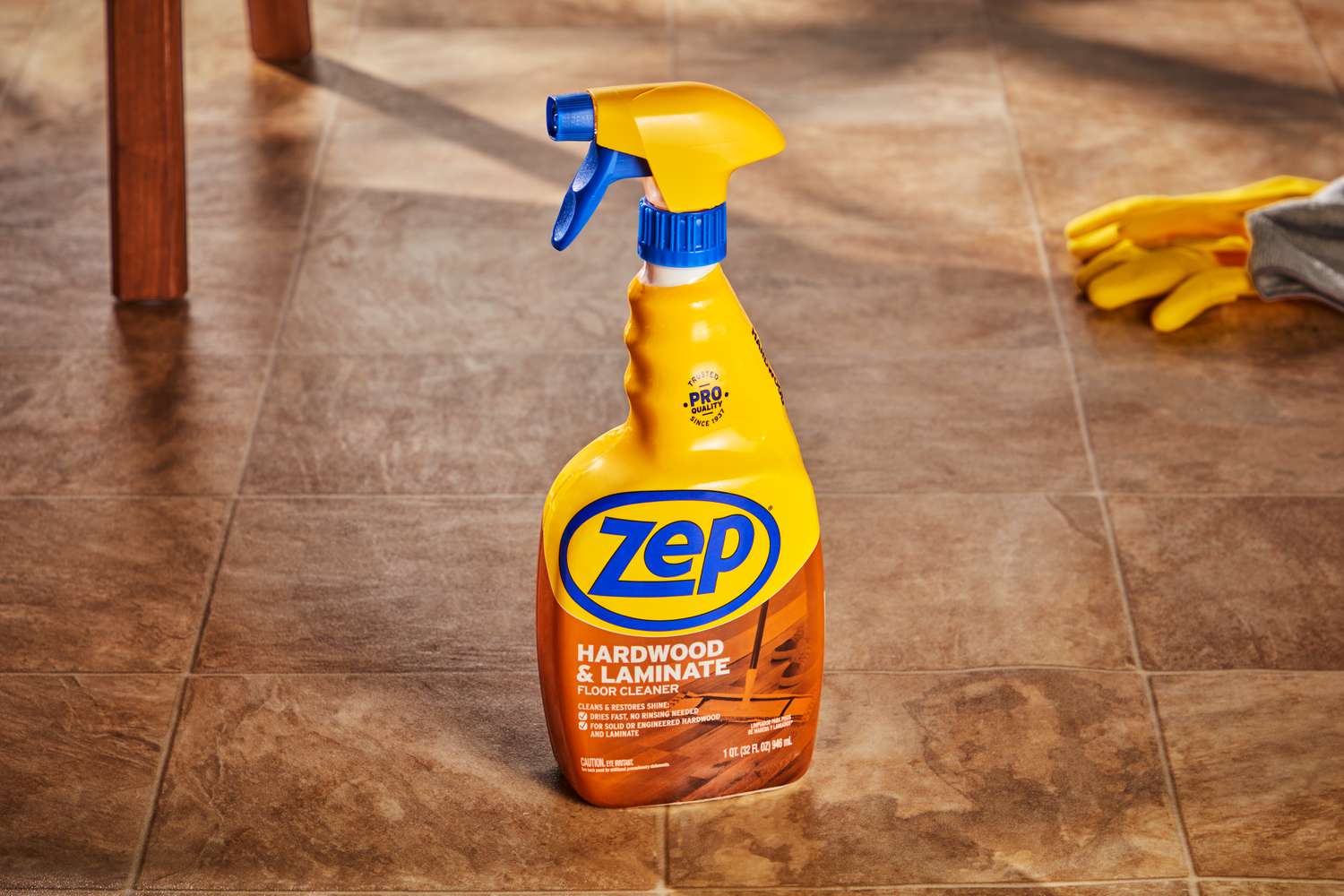
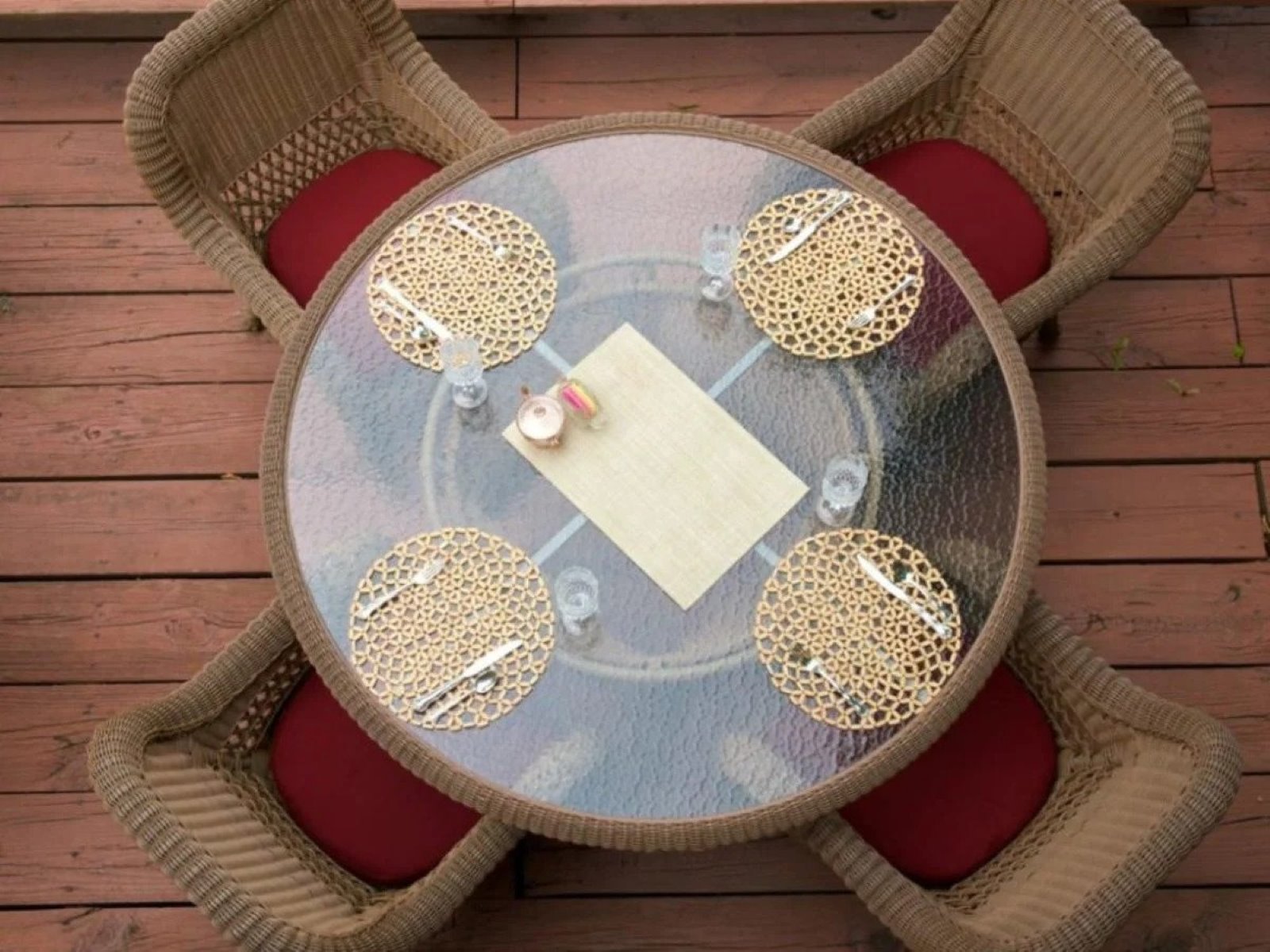
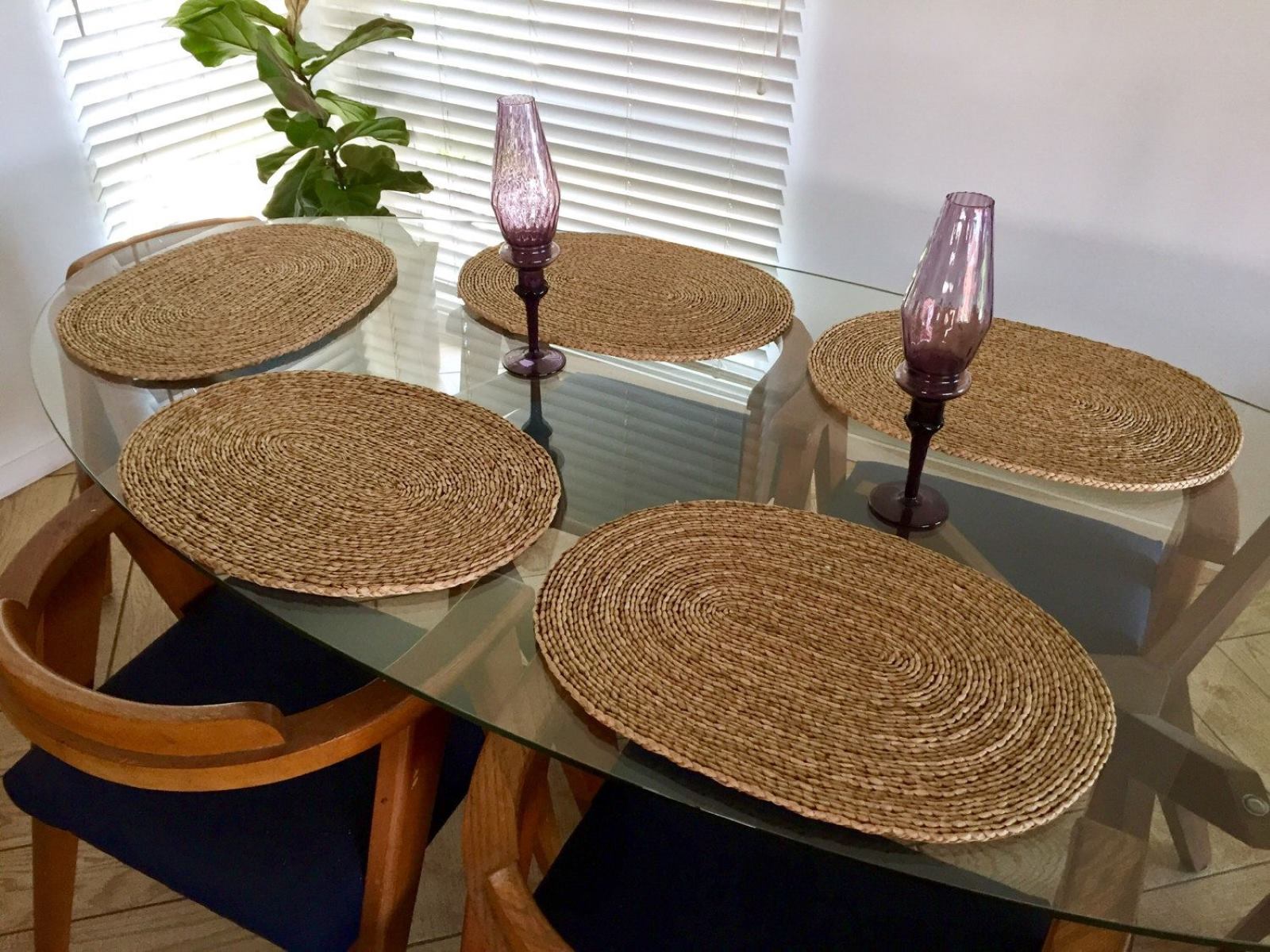
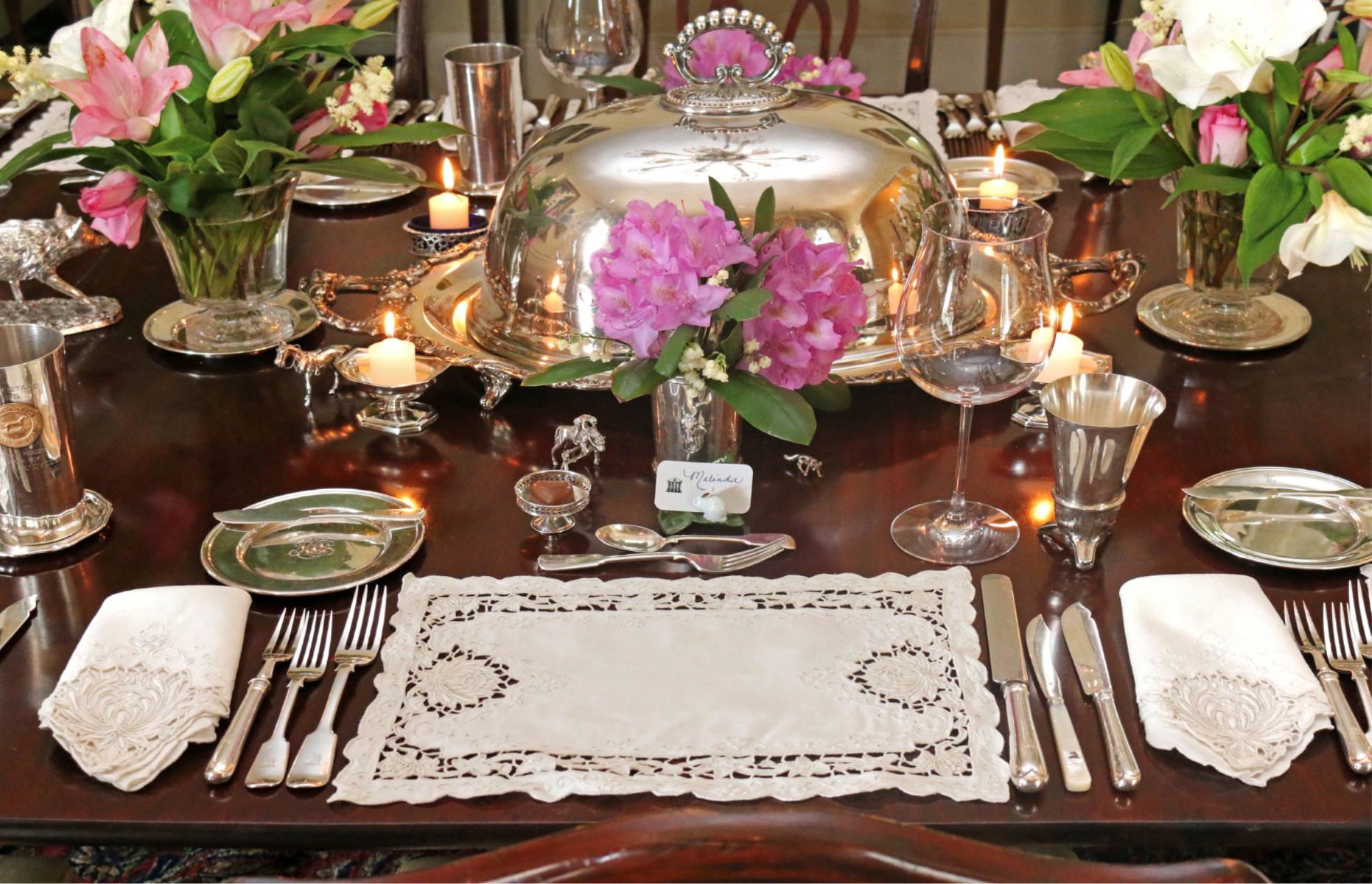
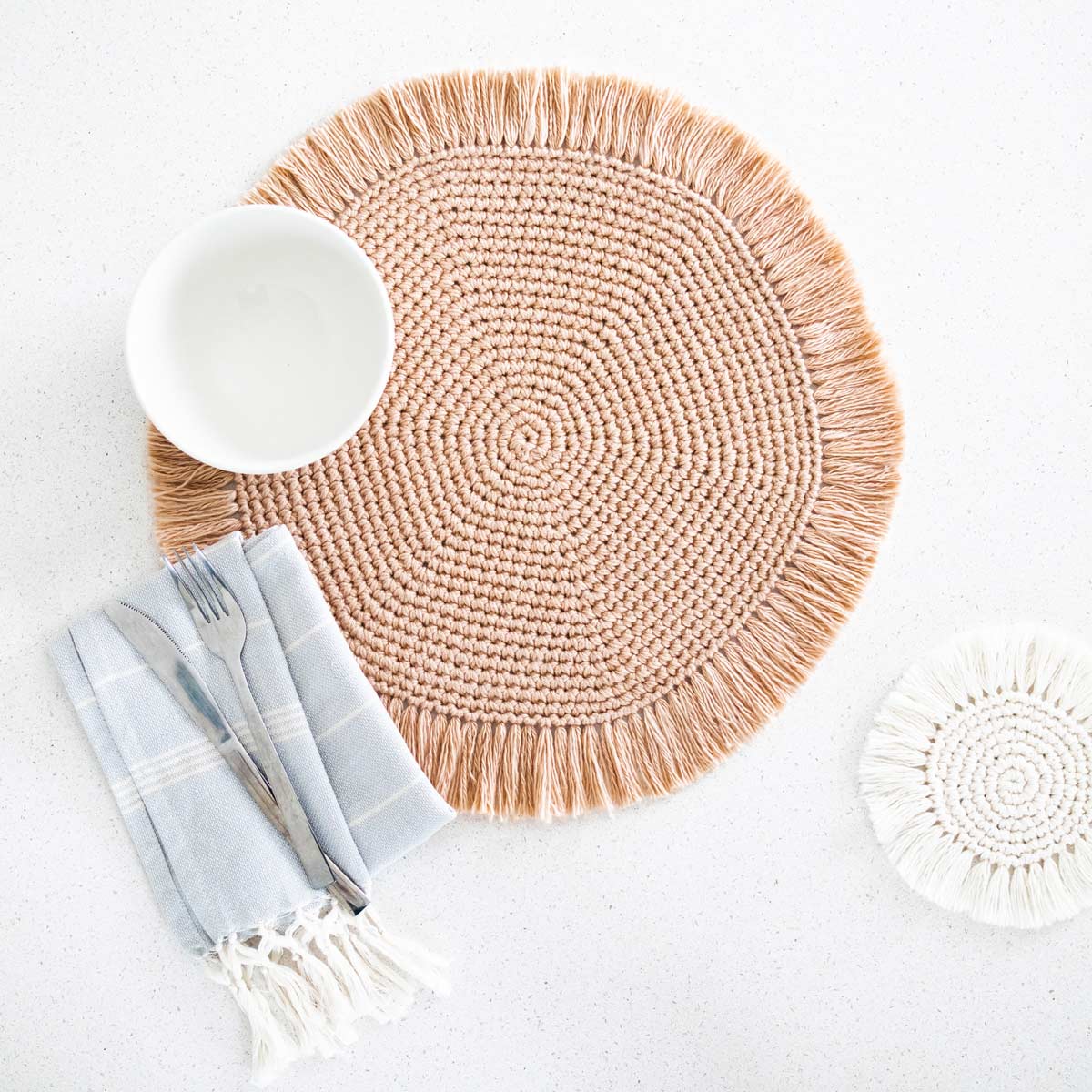
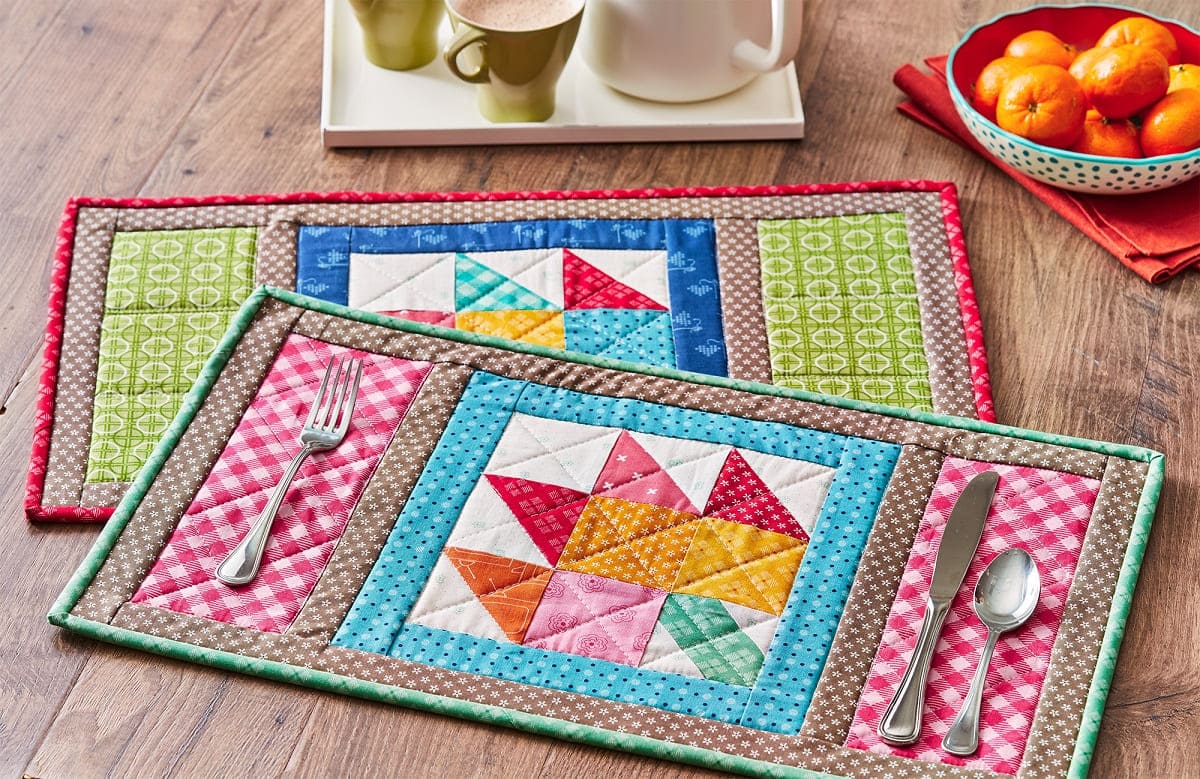

0 thoughts on “What Material Is Best For Placemats”